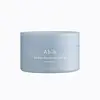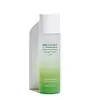What's inside
What's inside
 Key Ingredients
Key Ingredients

 Benefits
Benefits

 Ingredients Side-by-side
Ingredients Side-by-side

Water
Skin ConditioningSedum Sarmentosum Extract
HumectantGlycerin
HumectantCetyl Ethylhexanoate
EmollientCaprylic/Capric Triglyceride
MaskingPentylene Glycol
Skin ConditioningBetaine
HumectantMacadamia Integrifolia Seed Oil
Skin Conditioning1,2-Hexanediol
Skin ConditioningSodium Hyaluronate
HumectantHydrolyzed Hyaluronic Acid
HumectantHyaluronic Acid
HumectantSodium Hyaluronate Crosspolymer
HumectantHydroxypropyltrimonium Hyaluronate
Sodium Acetylated Hyaluronate
HumectantAllantoin
Skin ConditioningPanthenol
Skin ConditioningPhytosterols
Skin ConditioningBeta-Glucan
Skin ConditioningCeramide NP
Skin ConditioningArginine
MaskingPhospholipids
Skin ConditioningCholesterol
EmollientTocopherol
AntioxidantHydrolyzed Vegetable Protein
Skin ConditioningMadecassoside
AntioxidantAsiaticoside
AntioxidantCentella Asiatica Leaf Extract
Skin ConditioningChlorella Vulgaris Extract
Skin ConditioningTromethamine
BufferingGlucose
HumectantHydroxyacetophenone
AntioxidantButylene Glycol
HumectantFructooligosaccharides
HumectantFructose
HumectantHydroxyethyl Acrylate/Sodium Acryloyldimethyl Taurate Copolymer
Emulsion StabilisingEthylhexylglycerin
Skin ConditioningCetearyl Olivate
Dipotassium Glycyrrhizate
HumectantSorbitan Olivate
EmulsifyingLauroyl Lysine
Skin ConditioningSodium Phytate
Hydrogenated Lecithin
EmulsifyingPropanediol
SolventBenzyl Glycol
SolventHydrolyzed Glycosaminoglycans
HumectantMaltodextrin
AbsorbentCarbomer
Emulsion StabilisingWater, Sedum Sarmentosum Extract, Glycerin, Cetyl Ethylhexanoate, Caprylic/Capric Triglyceride, Pentylene Glycol, Betaine, Macadamia Integrifolia Seed Oil, 1,2-Hexanediol, Sodium Hyaluronate, Hydrolyzed Hyaluronic Acid, Hyaluronic Acid, Sodium Hyaluronate Crosspolymer, Hydroxypropyltrimonium Hyaluronate, Sodium Acetylated Hyaluronate, Allantoin, Panthenol, Phytosterols, Beta-Glucan, Ceramide NP, Arginine, Phospholipids, Cholesterol, Tocopherol, Hydrolyzed Vegetable Protein, Madecassoside, Asiaticoside, Centella Asiatica Leaf Extract, Chlorella Vulgaris Extract, Tromethamine, Glucose, Hydroxyacetophenone, Butylene Glycol, Fructooligosaccharides, Fructose, Hydroxyethyl Acrylate/Sodium Acryloyldimethyl Taurate Copolymer, Ethylhexylglycerin, Cetearyl Olivate, Dipotassium Glycyrrhizate, Sorbitan Olivate, Lauroyl Lysine, Sodium Phytate, Hydrogenated Lecithin, Propanediol, Benzyl Glycol, Hydrolyzed Glycosaminoglycans, Maltodextrin, Carbomer
Water
Skin ConditioningCamellia Sinensis Leaf Extract
AntimicrobialButylene Glycol
HumectantGlycerin
HumectantDiethoxyethyl Succinate
Solvent1,2-Hexanediol
Skin ConditioningPanthenol
Skin ConditioningBacillus Ferment
Skin ConditioningSodium Hyaluronate
HumectantBetaine
HumectantHydroxyethyl Acrylate/Sodium Acryloyldimethyl Taurate Copolymer
Emulsion StabilisingAcrylates/C10-30 Alkyl Acrylate Crosspolymer
Emulsion StabilisingTromethamine
BufferingEthylhexylglycerin
Skin ConditioningSorbitan Isostearate
EmulsifyingCaprylyl/Capryl Glucoside
CleansingWater, Camellia Sinensis Leaf Extract, Butylene Glycol, Glycerin, Diethoxyethyl Succinate, 1,2-Hexanediol, Panthenol, Bacillus Ferment, Sodium Hyaluronate, Betaine, Hydroxyethyl Acrylate/Sodium Acryloyldimethyl Taurate Copolymer, Acrylates/C10-30 Alkyl Acrylate Crosspolymer, Tromethamine, Ethylhexylglycerin, Sorbitan Isostearate, Caprylyl/Capryl Glucoside
 Reviews
Reviews

Ingredients Explained
These ingredients are found in both products.
Ingredients higher up in an ingredient list are typically present in a larger amount.
1,2-Hexanediol is a synthetic liquid and another multi-functional powerhouse.
It is a:
- Humectant, drawing moisture into the skin
- Emollient, helping to soften skin
- Solvent, dispersing and stabilizing formulas
- Preservative booster, enhancing the antimicrobial activity of other preservatives
Betaine is a common humectant (a substance that promotes retention of moisture). It's known to be gentle on the skin and can help balance hydration.
This ingredient is best for improving hydration and soothing irritated skin. Studies also show it helps even out skin tone.
Fun fact: Betaine is naturally created in the skin and body. The kind found within cosmetic products can be either plant-derived or synthetic.
Another name for betaine is trimethylglycine.
Learn more about BetaineButylene Glycol (or BG) is used within cosmetic products for a few different reasons:
Overall, Butylene Glycol is a safe and well-rounded ingredient that works well with other ingredients.
Though this ingredient works well with most skin types, some people with sensitive skin may experience a reaction such as allergic rashes, closed comedones, or itchiness.
Learn more about Butylene GlycolEthylhexylglycerin (we can't pronounce this either) is commonly used as a preservative and skin softener. It is derived from glyceryl.
You might see Ethylhexylglycerin often paired with other preservatives such as phenoxyethanol. Ethylhexylglycerin has been found to increase the effectiveness of these other preservatives.
Glycerin is already naturally found in your skin. It helps moisturize and protect your skin.
A study from 2016 found glycerin to be more effective as a humectant than AHAs and hyaluronic acid.
As a humectant, it helps the skin stay hydrated by pulling moisture to your skin. The low molecular weight of glycerin allows it to pull moisture into the deeper layers of your skin.
Hydrated skin improves your skin barrier; Your skin barrier helps protect against irritants and bacteria.
Glycerin has also been found to have antimicrobial and antiviral properties. Due to these properties, glycerin is often used in wound and burn treatments.
In cosmetics, glycerin is usually derived from plants such as soybean or palm. However, it can also be sourced from animals, such as tallow or animal fat.
This ingredient is organic, colorless, odorless, and non-toxic.
Glycerin is the name for this ingredient in American English. British English uses Glycerol/Glycerine.
Learn more about GlycerinThis is a synthetic polymer. It helps improve the texture of products by adding thickness and gel-like feel.
It is also an emulsifer, meaning it prevents ingredients such as oil and water from separating. It also helps evenly disperse other ingredients.
Panthenol is a common ingredient that helps hydrate and soothe the skin. It is found naturally in our skin and hair.
There are two forms of panthenol: D and L.
D-panthenol is also known as dexpanthenol. Most cosmetics use dexpanthenol or a mixture of D and L-panthenol.
Panthenol is famous due to its ability to go deeper into the skin's layers. Using this ingredient has numerous pros (and no cons):
Like hyaluronic acid, panthenol is a humectant. Humectants are able to bind and hold large amounts of water to keep skin hydrated.
This ingredient works well for wound healing. It works by increasing tissue in the wound and helps close open wounds.
Once oxidized, panthenol converts to pantothenic acid. Panthothenic acid is found in all living cells.
This ingredient is also referred to as pro-vitamin B5.
Learn more about PanthenolSodium Hyaluronate is hyaluronic acid's salt form. It is commonly derived from the sodium salt of hyaluronic acid.
Like hyaluronic acid, it is great at holding water and acts as a humectant. This makes it a great skin hydrating ingredient.
Sodium Hyaluronate is naturally occurring in our bodies and is mostly found in eye fluid and joints.
These are some other common types of Hyaluronic Acid:
Learn more about Sodium HyaluronateTromethamine helps balance the pH and improve the texture of a product. It is synthetically created.
As an emulsifier, Tromethamine prevents oil and water ingredients from separating. This helps stabilize the product and elongate a product's shelf life. Tromethamine also makes a product thicker.
Tromethamine helps balance the pH level of a product. Normal pH level of skin is slightly acidic (~4.75-5.5). The acidity of our skin is maintained by our glands and skin biome. Being slightly acidic allows our skin to create an "acid mantle". This acid mantle is a thin barrier that protects our skin from bacteria and contaminants.
Oral Tromethanmine is an anti-inflammatory drug but plays the role of masking, adding fragrance, and/or balancing pH in skincare.
1,3-Propanediol, 2-amino-2-(hydroxymethyl)-
Learn more about TromethamineWater. It's the most common cosmetic ingredient of all. You'll usually see it at the top of ingredient lists, meaning that it makes up the largest part of the product.
So why is it so popular? Water most often acts as a solvent - this means that it helps dissolve other ingredients into the formulation.
You'll also recognize water as that liquid we all need to stay alive. If you see this, drink a glass of water. Stay hydrated!
Learn more about Water